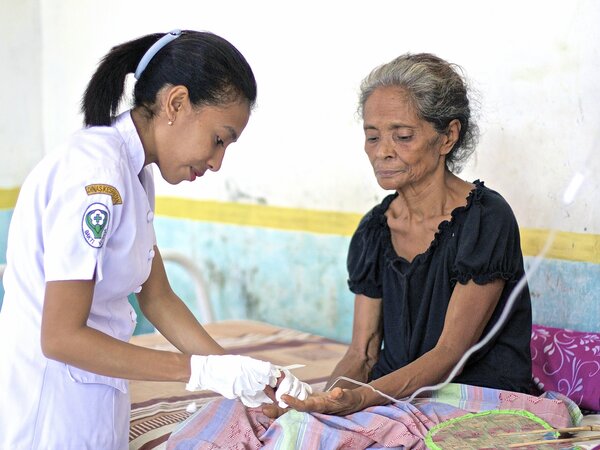Plasmodium vivax diagnosis
Diagnostic Methods
Clinical signs and symptoms alone do not permit accurate diagnosis of P. vivax. All suspected cases should be confirmed by a diagnostic tool: either light microscopy, a rapid diagnostic test (RDT) or molecular mthods. All of these require venous or capillary blood sample. Diagnostics for malaria parasites including P. vivax are included in the recently launched WHO Essential Diagnostics List, underlining their importance as critical tools for many countries.
Challenges in diagnosing P. vivax
There are some issues with the various stages of the P. vivax lifecycle that complicate diagnosis. These include low parasite density and the complex lifecycle of the parasite.
Low parasite density
- P. vivax merozoites only invade immature red blood cells (reticulocytes). As these occur most often in the bone marrow, rather than in the blood circulation, parasite densities in blood are often low, making the parasite detection more challenging.
- Parasite biomass is mostly concentrated in extravascular tissues (bone marrow and spleen) and parasitemia at presentation is, on average 3 to 4-times lower for P. vivax than for P. falciparum.1
- To reliably diagnose symptomatic P. vivax malaria, the limit of detection of any test should be a minimum of 25 parasites/µL and ideally not more than 5 parasites/µL blood.1
- The lowest detectable parasite concentration for uncomplicated P. vivax malaria at present is typically lower than 5 parasites/ul blood and detection cannot be achieved with currently available clinical diagnostic methods.1
Complex life cycle
- Gametocytes appear at approximately the same time as asexual parasites, usually before the onset of symptoms. Thus, individuals may be infectious before diagnosis.
- P. vivax hypnozoites, which lie dormant in the liver, are undetectable with any currently available diagnostic methods.



